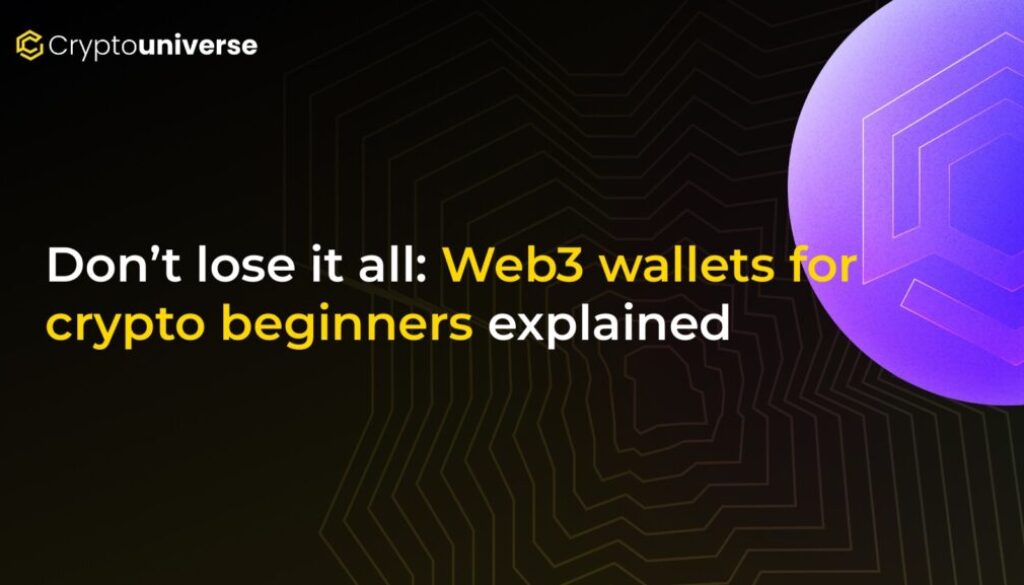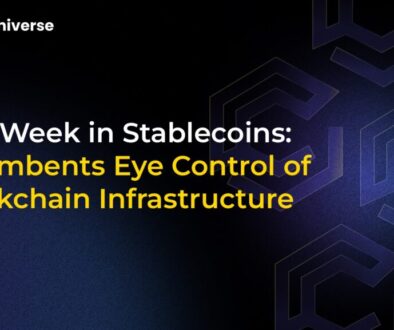Don’t lose it all: Web3 wallets for crypto beginners explained

Lose Your Crypto Wallet, Lose Everything. No Exceptions.
That isn’t just a catchy headline; it’s the brutal reality of the decentralized world. Your tokens, your prized NFTs, your entire digital identity on Web3 — they can all vanish in an instant. One misplaced recovery phrase, one download of a fake app, or one careless click on a suspicious transaction pop-up is all it takes. Billions of dollars have already been lost this way.
If you’re new to cryptocurrency, you’ve likely been bombarded with jargon like “seed phrases,” “self-custody,” and “smart contract permissions.” It can feel overwhelming, but the core concept is simple: your Web3 wallet is your bank, your vault, and your passport to the decentralized internet. Get the setup right, and you’re ready to explore. Get it wrong, and you could lose it all.
This guide will demystify what a Web3 wallet is, how to choose the right one, and how to navigate the common pitfalls that trap beginners. We’ll break down the essentials of security and highlight Best Wallet, an innovative app designed to make crypto safer and more accessible for newcomers.
What Exactly is a Web3 Wallet?
Think of a Web3 wallet as your personal login for the world of crypto. Unlike a traditional bank account or an account on a crypto exchange, a Web3 wallet gives you direct ownership of your assets. It doesn’t hold your crypto; it holds the private keys that prove you own it. This concept is called self-custody.
With self-custody, you are in complete control. No company can freeze your funds or block your transactions. As Darrell White, a partner at Kimura London & White LLP, warns, this freedom comes with a heavy dose of responsibility: “With a Web3 wallet, the user assumes all risk for actions taken, for example, signing a smart contract with unforeseen obligations.”
Every on-chain action, from sending tokens and trading on decentralized exchanges (DEXs) to collecting NFTs, starts and ends with your wallet.
Types of Web3 Wallets:
- Software Wallets (Hot Wallets): These are apps on your phone or browser extensions on your desktop. They are connected to the internet, making them convenient for daily use but more vulnerable to online threats. Examples include MetaMask, Trust Wallet, and Best Wallet.
- Hardware Wallets (Cold Wallets): These are physical devices, like a USB drive, that store your private keys offline. They offer the highest level of security for long-term storage but are less convenient for frequent transactions.
Choosing Your First Crypto Wallet: Why Simplicity and Security Matter
For beginners, the best wallet is one that balances robust security with a user-friendly experience. While veterans might be comfortable with complex interfaces, newcomers need clear instructions, simple recovery options, and built-in safeguards.
Legacy wallets like MetaMask are widely supported but can feel dated and confusing for first-time users. Trust Wallet gained popularity as a mobile-first option, with CEO Eowyn Chen emphasizing that “security and trust aren’t hurdles to wallet innovation; they are its foundation.”
Newer options are focusing more on user experience. The Coinbase Wallet (formerly Base app) introduces features like passkey sign-ins to simplify the process. However, a new contender, Best Wallet, is designed from the ground up specifically for those who don’t want to learn about security the hard way.
Why Best Wallet is a Top Pick for Beginners
Best Wallet tackles the biggest beginner pain points head-on. Instead of forcing you to immediately write down and secure a complex seed phrase, it offers modern recovery options like cloud-based backups. It also integrates features that other wallets lack:
- Built-in Scam Filters: Flags potentially malicious transactions in plain English before you approve them.
- All-in-One Portfolio Tracking: Monitor all your assets across different blockchains in one clean dashboard.
- DEX Aggregator: Swap thousands of tokens across 60+ blockchains directly within the app.
- Market Insights & Airdrops: Get real-time data and notifications about new opportunities.
For anyone looking to buy their first Bitcoin, Ethereum, or Solana without getting lost in technical details, Best Wallet provides a streamlined and secure starting point.
How to Set Up Your First Web3 Wallet in 5 Steps
Getting started is easy, but doing it safely is critical. Fake apps and phishing sites are rampant.
- Download a Trusted Wallet: Only download from the official Apple App Store or Google Play Store. For this guide, we recommend starting with the Best Wallet app for its beginner-friendly setup.
- Set Up and Secure Your Account: Follow the in-app instructions. You’ll typically create a password and be prompted to back up your recovery method. This is the most important step. For traditional wallets, you must write down your 12 or 24-word seed phrase and store it somewhere safe and offline. Never store it as a screenshot or in a cloud drive. Best Wallet offers more forgiving encrypted backup options.
- Enable Extra Security: Turn on two-factor authentication (2FA) and biometric logins (Face ID/fingerprint) for another layer of protection.
- Fund Your Wallet: Connect a bank account, debit/credit card, or use a service like Apple Pay to purchase your first crypto.
- Buy Your First Crypto (Start Small!): Choose a major cryptocurrency like Bitcoin (BTC) or Ethereum (ETH), enter a small amount, and complete the purchase. Doing a small test transaction first ensures you understand the process before committing larger sums.
The Biggest Mistakes Crypto Beginners Make (And How to Avoid Them)
Billions in crypto have been stolen not through complex hacks, but by exploiting simple user errors. Vasily Vidmanov, COO of AMLBot, notes, “In our investigations, 90% of the stolen or hacked wallets we encounter are Web3 wallets… when users unknowingly approve malicious smart contracts or connect to fraudulent dApps.”
Avoid these common disasters:
- Losing Your Seed Phrase: As Steve Morris of Newmedia.com puts it, “There’s no ‘forgot password’ button in crypto.” If you lose your seed phrase for a traditional self-custody wallet, your funds are gone forever. Use a wallet with modern recovery options or be extremely diligent about storing your phrase offline.
- Approving Malicious Contracts: When you interact with a decentralized application (dApp), it will ask for permission to access your wallet. A malicious contract can ask for unlimited permission to drain your funds. Read every approval request carefully. Wallets like Best Wallet help by flagging suspicious requests.
- Falling for Phishing Scams: Never click on suspicious links or enter your seed phrase on any website. Your wallet provider will never ask for your seed phrase. Ever.
Are Web3 Wallets Truly Anonymous?
Forget the fantasy of complete anonymity. While your wallet address is a string of random characters, every transaction it makes is permanently recorded on the public blockchain. “While a wallet doesn’t reveal the real-world identity of its owner by default, all transactions it makes are permanently recorded and transparent,” explains Vidmanov.
Once you link your wallet to an exchange that requires Know Your Customer (KYC) verification, your identity can be tied to your on-chain activity. To manage privacy, many users operate multiple wallets for different purposes (e.g., one for trading, one for NFTs). Best Wallet’s dashboard makes it easy to manage several wallets from one interface.
Your Journey into Crypto Starts with the Right Wallet
Web3 wallets are your gateway to the future of finance and the internet. They offer unparalleled freedom and control, but that power comes with responsibility. For beginners, the path forward is clear: prioritize simplicity, security, and a user experience that guides you away from common dangers.
By starting with a wallet built for newcomers, like Best Wallet, you can learn the ropes without unnecessary risk. Start small, stay skeptical of anything that seems too good to be true, and choose a tool that puts your security first. With the right setup, your wallet will be the most powerful tool you have for owning your assets on your terms.
Frequently Asked Questions (FAQ)
How can I protect my crypto from hackers?
Always use a trusted wallet from an official app store. Write down your recovery phrase and store it offline in a secure location. Use a wallet with built-in security features, like Best Wallet’s scam transaction warnings, and enable 2FA and biometric logins.
Can I trade different cryptocurrencies within a Web3 wallet?
Yes. Many modern wallets, including Best Wallet, have a built-in swap feature or a DEX aggregator. This allows you to trade thousands of different tokens across multiple blockchains without ever having to send your funds to a centralized exchange.
What happens if I lose my seed phrase?
For most traditional self-custody wallets, losing your seed phrase means your crypto is lost forever. There is no recovery process. This is why newer wallets like Best Wallet are introducing encrypted cloud backups and other user-friendly recovery tools to prevent this catastrophic outcome.
How secure is the Best Wallet app?
The Best Wallet app is a non-custodial wallet, which means you and only you control your private keys. It enhances security with features like biometric logins, 2FA, and advanced scam detection, making it one of the safest and most user-friendly options for managing your crypto assets.


